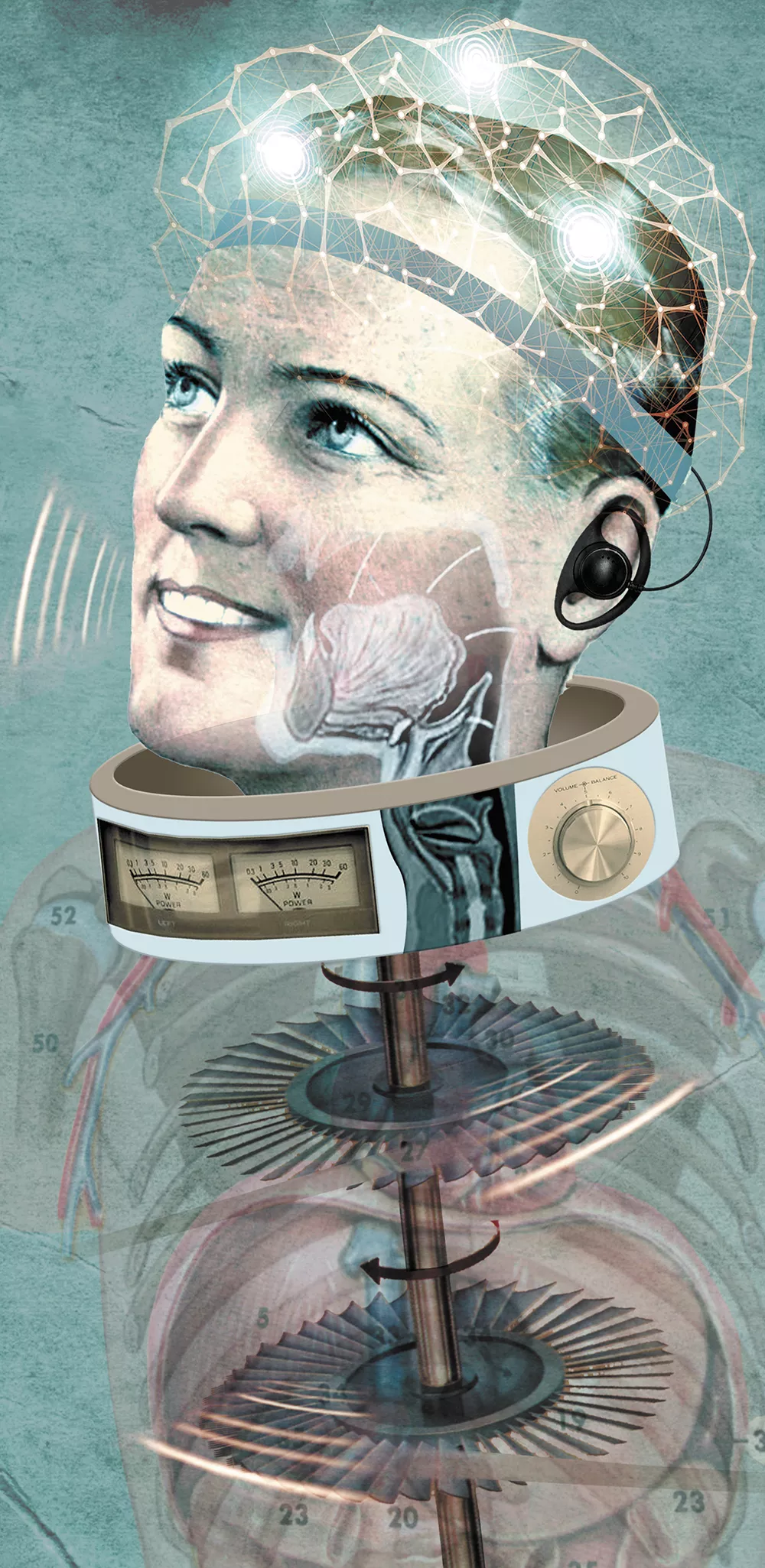The whiteboard in Mark VanDam's office in the Washington State University Spokane Department of Speech and Hearing Sciences bursts with sine waves and strange equations scrawled in bright primary colors. VanDam, gesturing around the room, says he's working on a multitude of projects. No one would doubt that. The office is packed with speakers and rack mount gear and tables stacked with microcomputers and sensors. One project is a device that VanDam builds for under $50; he hopes it will help the ever-growing segment of America aging into Parkinson's disease.
Parkinson's is a neurodegenerative disease that leads to loss of motor control. Patients experience a loss of speech volume. It's not that a man suffering from Parkinson's can't speak at an audible volume, he just doesn't realize that he's speaking too quietly until his wife elbows him in the ribs or a friend says "speak up."
VanDam's device doesn't elbow anyone in the ribs. It is a wearable, real-time vocal biofeedback device that has the potential to revolutionize the way the 1 million Parkinson's patients in the United States interact with those around them. The constant reminders to speak up really break up the flow of a conversation, and VanDam saw this as a perfect opportunity for a small, wearable computer to substantially improve patients' ability to communicate. The project, still in the early stages, already is showing promise with research volunteers in Spokane County.
Between 50,000 and 60,000 new cases of Parkinson's are diagnosed each year, and VanDam says there are at least 22,000 Parkinson's patients in Washington. Spokane County has 1,600. The number of people suffering from the disease and the frequency with which the patients suffer from low speech volume led VanDam to settle on this area for research. He's excited about using cheap technology to help a lot of people, and this seemed like an area where doing so was possible.
VanDam's biofeedback device consists of a wearable microcomputer that is programmed to interact with an accelerometer — a sensor that measures vibration — strapped to a patient's throat. The accelerometer monitors vocal activity and sends the information to the computer.
"It goes onto the neck or collarbone or clavicle, and it collects how much the larynx or voice box is moving, and from that we can do fancy math and figure out how loud people are talking," says VanDam. "People with Parkinson's have reduced volume when they speak, it's a product of the disease, but it's not really a physiological thing. It's a behavioral thing, so it's not that they are unable to have appropriate volume, but it has to do with control of breathing muscles and cognitive ability and so on."
The patients simply don't realize that they aren't speaking loudly or clearly enough for people to hear them. The changes occur in response to neurological changes that make interpreting one's own speech more difficult for the patient. The voice changes vary from patient to patient, and VanDam's device can assess what changes are occurring and adapt to better serve individual needs.
Right now the device is being tested by volunteers, some of whom have Parkinson's; others don't.
VanDam and his colleagues build each device themselves, soldering the wearable computer to the accelerometer and programming each unit individually. Right now the computer part of the unit is fairly large by modern standards, about the size of a bar of soap. It fits into a fabric pocket, though it's still a bit clunky. If the devices were to make it to market, they would be far smaller and mass-produced.
"This is a really common problem with people with Parkinson's," VanDam says. "It's not like only a few get it; pretty much all of them have voice problems, so it's an area with a lot of potential for growth. The ways we have addressed it clinically have been unsatisfying in the past. They were expensive, required a lot of therapy and maybe didn't work very well, so those kind of things are ripe for innovation."
One of the trickiest parts is building a device that will be simple for patients to learn and use. Much of VanDam's current work involves tweaking the device to make it more user-friendly, a tall order in a population of aging users with a neurodegenerative disease.
"We don't want to have someone who's suffering from Parkinson's — who is maybe in their 70s or 80s — and give them a fancy, high-tech computer that they have to partially program on their own, so we want to be careful about having it easy and mobile and not having a lot of buttons, or little bits and pieces to it — those kinds of things — so as we hone in on this, we think it definitely is going to be helpful to people," says VanDam.
It will be a while before VanDam's biofeedback device makes it to market and helps patients outside of Spokane.
"We're at the beginning stages of this, relatively speaking," says VanDam. "We're a couple years in, but these things take a while. More money would make it go faster." ♦






















